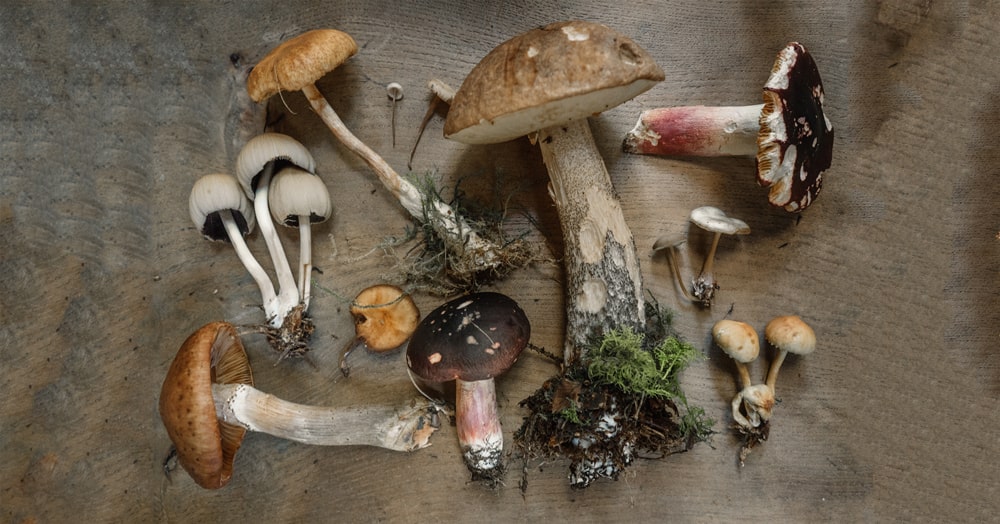The Health Benefits of Medicinal Mushrooms: 4 Powerful Healing Fungi for Supercharging Your Health and Immunity
BY TERO ISOKAUPPILA
1. Cordyceps
[cȯr-di-səps] / Ophiocordyceps sinensis
Use Cordyceps to:
+ Perform better (both athletically and in the bedroom)
+ Increase energy
+ Alleviate asthma or bronchitis

Cordyceps is a medicinal mushroom valued primarily for its extraordinary ability to increase energy and reduce fatigue. It’s been a centerpiece of traditional Chinese medicine for more than 1,300 years, with the first known record of its use dating back to the Tang Dynasty in AD 620.
If historical lore is to be trusted, yak herders in the Himalayas of ancient Tibet and Nepal first noticed the effects of cordyceps when their animals became significantly more frolicky and frisky after grazing in areas where it grew. What those yaks were grazing on is another interesting tidbit: cordyceps’s stoma and fruiting body grow out of the mummified carcasses of insect larvae, usually caterpillars—hence its English nickname, the “caterpillar mushroom.”In the wild, cordyceps spores inhabit and kill their insect host, stealing all its nutrients to survive. While some strains of cordyceps now grow in other locations (the mountainous regions of Peru, for example), the original celebrated strain of cordyceps grows only on the Himalayan Plateau, at roughly 12,000 feet above sea level, so harvesting them from the wild is both extremely challenging and prohibitively expensive. This in part explains why cordyceps was so valuable in ancient China as one of the best medicinal mushrooms—it was as rare as it was effective. Today, a Himalayan harvester hopes to find about ten small specimens per day. These treasures may then appear on the shelves of a local apothecary and sell for $500 to $1,300 an ounce—wild cordyceps can cost as much as $20,000 a pound!—meaning that a good harvest year can make a huge difference in the life of the field worker. In fact, some experts estimate that the harvesting of wild cordyceps represents up to 90% of the cash income in the areas of Tibet where cordyceps grows, and about 40% of all rural area cash income in Tibet. It’s a huge business, albeit not a very sustainable one. But don’t worry—there’s cordyceps that have been cultivated in a vegan-friendly way through liquid fermentation (the mycelium is strained and dual extracted to create a mushroom extract that is as potent as the wild variety).
Considered as one of the most popular healing mushrooms, cordyceps is most notable for its energizing effects, due to its beta-glucans. Those present in cordyceps, like all other beta-glucans, deliver oxygen to the body on a cellular level, which not only decreases the occurrence of disease but also increases energy and stamina. Cordyceps also significantly boosts adenosine triphosphate (ATP) levels in the body. ATP is the body’s main energy supply source and is required for all cellular processes. Cells need energy to activate our muscles and keep us moving. Think of ATP acting on our bodies the way batteries do in a flashlight. When our ATP levels dip, our energy levels take a dive as well. When ATP is recharged, by cordyceps, for example, we shine bright again, moving with ease and alacrity. Because it is so effective at increasing energy and decreasing fatigue, cordyceps is a popular and effective mushroom supplement for the elderly who are seeking to counteract the lethargy that often accompanies aging and for athletes who are looking to perform at peak levels.
Here’s a notable example. Cordyceps first came under the spotlight of mainstream culture in 1993 when China’s Olympic women’s track-and-field team broke three world records in a single week. The athletes were tested for banned substances and none were detected. Ma Junren, the team’s legendary coach, eventually disclosed that the secret to the team’s success was a “secret elixir made from the Cordyceps sinensis mushroom.” Those results are probably a bit more extreme than what you and I will experience, but the fact is that everyone can benefit from using cordyceps as a general rejuvenator, particularly when your body is recovering from illness.
Because of cordyceps’s unique ability to boost oxygen flow and increase ATP, it can also have a tremendous impact on respiratory issues, such as asthma or bronchitis. I had a friend who had suffered from asthma since he was a young boy, but as an adult, he started using cordyceps, taking 1,000 to 2,000 milligrams in capsule form daily. After about a month of consistent use, he no longer needed his inhaler or prescription asthma medications.
Cordyceps’s anti-inflammatory properties mean that it can help with blood flow, overall heart health, and lowering cholesterol. Its beta-glucans and another chemical compound called cordysepic acid have been known to shrink tumors and directly stimulate lymphocyte production, to kill foreign bodies in the immune system. Among the many other benefits of this medicinal mushroom, there’s the interesting fact that cordyceps has been known to help with libido. This perk is attributed to both the cordysepic acid as well as deoxyadenosine, another chemical acid. Both help with erectile dysfunction by boosting testosterone levels and increasing blood flow by getting things moving in all the right places. Just as it affected those frisky animals in the Himalayas, cordyceps can help out humans in the bedroom. No wonder it’s earned the rather unimaginative, yet fitting, nickname “cordysex.”
If you happen to be in the Himalayas during a harvest period, you’ll recognize cordyceps by the dark brown “tail” (fruiting body) growing out of the carcasses of dead caterpillars. And if you are there for such an event, be careful, since there is a lot of competition for this highly valued fungi; fights over foraging rights can get ugly.
The Insane Power of Fungi
Cordyceps is part of the Ascomycetes fungus family, which also includes truffles and morels; Penicillium, the mold that naturally produces penicillin; and ergot fungus, the source of the most potent hallucinogen in the world, lysergic acid diethylamide (LSD). The fact that members of the same family can be used in such different manners—as prized culinary mushrooms, or as one of the most prevalent and prescribed antibiotics in the history of Western medicine, or as a powerful mood-altering illegal substance—perfectly illustrates the incredible dichotomy of the fungi kingdom.
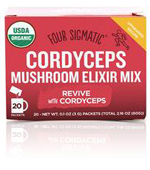 Conscious Lifestyle Recommends:
Conscious Lifestyle Recommends:
Four Sigmatic Organic Cordyceps Mushroom Elixir
Along with many other high-quality mushroom supplements, Four Sigmatic offers the legendary energy- and stamina-boosting cordyceps mushroom in convenient packets for a quick pick me up on the go or at the beginning of your day. Their cordyceps elixir is made by extracting the fruiting bodies of the mushroom. Organic, non-GMO, and free from fillers and carriers, their product is suitable for vegans and is not harvested from caterpillars.
2. Shiitake
[shē-təh-kē] / Lentinula edodes
Use Shiitake to:
+ Have clear, glowing skin
+ Support your liver
+ Lower cholesterol

Shiitake, which is one of the most widely cultivated mushrooms in the world, second only to the button mushroom, makes it the most easily accessible medicinal mushroom in the list. A veritable culinary delicacy featured in Asian cooking for centuries, shiitake has become increasingly popular in American cooking over the past decade. Delicious when used fresh, dried shiitake is also a favorite among chefs and home cooks who are seeking a more concentrated flavor. For strictly medicinal purposes, shiitake can be taken as a supplement in capsule form or as an extract. Each preparation will deliver a host of benefits and how you decide to consume it will vary depending on your particular needs.
Medicinal use of shiitake dates back at least as far as AD 100 in China, when it was used to treat and prevent upper respiratory diseases, boost circulation, increase energy, decrease fatigue, and as a general chi-enhancing elixir. It comes as little surprise that it was also used to combat and prevent signs of aging.
Today, we know shiitake to be a truly rare superfood, and one of the best medicinal mushrooms there is, as it contains seven of the nine essential amino acids (amino acids are the building blocks of proteins that must be consumed from outside sources, as the human body does not produce them). Shiitake also contains a host of essential enzymes (like amylase and cellulase, both of which aid in digestion), is a good source of vital minerals (including magnesium and potassium, which have antioxidant properties), and essential vitamins (such as B and D).
Like other healing mushrooms, Shiitake’s benefits include its immunomodulating abilities and its impact on the cardiovascular system. Regarding the immune system, one of the polysaccharides in shiitakes is lentinan, which stimulates and activates the different varieties of white blood cells that fight off infections. Lentinan has been especially powerful in combatting the effects of HIV and liver disease, making it an effective treatment for any sort of bodily detoxification. Perhaps surprisingly, this can even include improved skin appearance. People don’t often connect chronic acne or persistent breakouts with what’s going on with our internal organs, but our skin is really a mirror for whatever is happening in our liver. A fully functioning liver often equates to a flawless face.
Shiitake mushroom extract can also have tremendous effects on the cardiovascular system, as it can prevent substances from binding to the linings of blood vessels. For example, eritadenine, one of shiitake’s bioactive compounds, has repeatedly shown to help lower cholesterol by inhibiting its absorption in the bloodstream. It does this in part by suppressing the accumulation of lipids in the liver tissue and helping to eliminate cholesterol through the blood vessels, rather than allowing fatty acids to build up. Along with numerous anti-inflammatory and antiviral capacities, shiitake’s ability to improve blood circulation could mean much for those suffering from rheumatoid arthritis. To that end, the benefits of medicinal mushrooms are continuing to be more seriously studied.
You can identify shiitake by its medium-size, umbrella-shaped brown cap. The edges of the cap roll inward and the underside and stem of the mushroom are white. In the wild, shiitake grows on hardwood trees primarily in the mountainous regions of China, Japan, Indonesia, and Taiwan. Commercially, shiitake is commonly grown in sawdust and grain (logs are more expensive, heavier, and can be harder to obtain). Log-grown shiitake is more potent than sawdust-grown, so this is another reason to do your research when sourcing mushrooms. If your vendor does not cite where their shiitake grew, it was most likely grown in sawdust or grain.
Shiitake in Action
A powerful story showcasing shiitake’s healing properties involves a young teenage celebrity I know who was quietly suffering from a particularly pervasive and tenacious case of acne. Though he was using aggressive treatments, his skin was increasingly becoming a source of stress on his professional life as a public figure. The young man started taking 1,500 milligrams of shiitake extract, stopped taking his prescription, and in about a month his skin had cleared considerably, improving until the acne was completely gone.
Fun Fact
Many chefs prefer to use sun-dried shiitake, as the drying enhances the mushroom’s flavor. As an added bonus, the sun’s ultraviolet rays convert ergosterol (a derivative of a triterpene sterol found in shiitake and other fungi) into vitamin D2. With up to a hundredfold increase in vitamin D, sun-dried shiitakes can be a significant dietary source of your requirement of the vitamin. Because of the media hype a few years ago surrounding widespread vitamin D deficiencies in the United States, many companies capitalized on the money-making potential, and the vitamin D supplement market was quickly saturated. Be wary of these supplements, as many of them are questionable. Shiitake, on the other hand, directly delivers pure vitamin D.
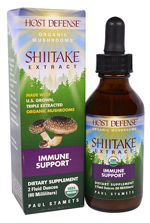 Conscious Lifestyle Recommends:
Conscious Lifestyle Recommends:
Host Defense Organic Shiitake Mushroom Extract
Host Defense Shiitake Extract uses certified organic mushroom mycelium that is triple extracted for maximum potency and a full spectrum of constituents: polysaccharides (beta glucans, arabinoxylan, glucose, xylose, galactose and mannose), glycoproteins, ergosterols, triterpenoids and other myco-nutrients, which are essential for supporting immunity.
3. Maitake
[mā-tək-ē] / Grifola frondosa
Use Maitake to:
+ Manage weight naturally
+ Stabilize blood sugar
+ Improve digestion

Another name that’s a must-have in our medicinal mushrooms list is maitake. In Japanese, maitake means “dancing mushroom,” a name that historical lore suggests was derived from the Samurai. Foraging for these precious mushrooms often involved long and strenuous escapades deep in the mountains and forests of Japan, and it is believed that the Samurai danced for joy upon discovering these edible treasures. Other names by which you might recognize this superfood include “sheep’s head” and “ram’s head.”
Like many of other top medicinal mushrooms, maitake has powerful immunomodulating properties, particularly due to its beta-glucan polysaccharides. What separates maitake from other medicinal mushrooms is its SX-fraction, a water-soluble compound so named because of its ability to counteract the effects of Syndrome X. Also known as metabolic syndrome, Syndrome X is not one disease, per se, but rather refers to a group of risk factors, including high blood sugar, high cholesterol, high blood pressure, and excess fat, that feed on one another to negatively impact your health and wellness. The SX-fraction compound, which is one of the many exemplary medicinal mushroom benefits, has the potential to reduce blood glucose levels, blood pressure, and body weight, so it can potentially work wonders on those suffering from diabetes or obesity. SX-fraction also works as an adaptogen, meaning it will not only benefit those who are hyperglycemic but can also stabilize blood sugar levels in those who are hypoglycemic. As with many health issues, solving the root of the problem often creates a positive domino effect on overall health and wellness. In the case of diabetes, if blood sugar is regulated and insulin resistance eliminated, it’s possible that kidney and renal functions, which often deteriorate as a result of diabetes, could be stabilized and any existing damage potentially reversed. Crazy stuff, isn’t it?
You can identify maitake by its cluster-like form that resembles the feathers of a fluffed chicken—hence the popular name for the mushroom in the United States, “hen-of-the-woods.” Known as one of the best healing mushrooms today, maitake primarily grows at the base of oak or elm trees in the northeastern parts of Japan and North America. Maitake can be eaten fresh or dried and is a popular culinary mushroom used by chefs the world over. It’s also often taken in powder form after an extraction process.
Maitake in Action
A woman I worked with years ago suffered from intestinal candidiasis (a yeast-like bad fungus that had accumulated in her GI tract due to a bacterial imbalance in her body). Because candida is a strain of yeast, she was sure she could not eat mushrooms for fear of literally feeding the problem. However, it’s a myth that those suffering from candida cannot eat mushrooms—in fact, many medicinal mushrooms like maitake and reishi have antifungal properties that work to eliminate bad fungi such as candida. Once she realized that mushrooms could actually help her, she started taking 3,000 milligrams of maitake extract daily, and within a few months, her candida had disappeared completely and her digestive system was back to normal.
Fun Fact
If you’re searching for flavor, look no further than maitake. Aside from being one of the most highly recommended medical mushrooms, it also contains l-glutamate, the amino acid responsible for that much-touted and oft-elusive “umami” taste. Known as the “fifth flavor,” you can experience umami by eating bacon, Parmesan cheese, and foods containing the artificial flavor-enhancer monosodium glutamate (MSG). None of these options are nearly as healthy as maitake, though, so look to mushrooms for your next culinary high.
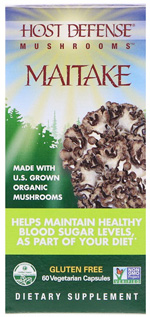 Conscious Lifestyle Recommends:
Conscious Lifestyle Recommends:
Host Defense Organic Maitake Mushroom Capsules
Host Defense Maitake uses activated, optimally dried, certified organic mushroom mycelium and fruit bodies, with a full spectrum of constituents: >55% (550mg/serving) polysaccharides, .5% (5mg/serving) fatty acids, and an array of extracellular constituents, including enzymes, antioxidants, and other myco-nutrients, essential for supporting natural immunity.
4. Turkey Tail
Coriolus versicolor or Trametes versicolor
Use Turkey Tail to:
+ Treat the common cold and flu
+ Aid digestion
+ Help heal infections

Considered as one of the best medicinal mushrooms there is, turkey tail earned its name due to the mushroom’s fan shape, which resembles the tail end of fall’s favorite bird. Its Latin name means “of several colors,” which is also fitting as this mushroom can be identified by the concentric circles of varying colors that appear on its fruiting body. A pervasive grower, turkey tail is the easiest to forage of all the medicinal mushrooms simply because of its ubiquity—you can find it almost anywhere, growing on dead or fallen hardwood trees, stumps, or branches. This quality may have been what led to its use in traditional Chinese medicine—it has been said that ancient Taoists were astonished by how easily this colorful mushroom grew on pine, which was a notoriously antifungal tree. They concluded that a mushroom of such tenacity and strength must contain incredible medicinal properties.
And so it does. Like many other medicinal mushrooms, turkey tail mushroom extract is full of polysaccharides and triterpenes that give it its immunomodulating properties, providing overall immune support and regulation to put you on the path to your healthiest self. What sets turkey tail apart from the rest of the medicinal mushrooms are two of its unique beta-glucans: polysaccharide krestin (PSK) and polysaccharide peptide (PSP).
PSK has received national media attention for its anticancer properties, which sparked a significant link between medicinal mushrooms and cancer. In Western medicine, the goal of cancer treatments such as chemotherapy and radiation is to kill the cancer cells, but a serious consequence of these aggressive treatments is that the immune system is often left compromised—you cannot kill all the bad cells without also taking out many of the good. What is amazing about the PSK and PSP in turkey tail is that they have the ability to regenerate white blood cells (which are necessary to ward off infection) and stimulate the activity and creation of T-cells, macrophages, and natural killer (NK) cells, enabling the immune system to once again ward off and destroy pathogens. As of this printing, PSK has been more thoroughly studied than PSP, particularly in Japan, where, as early as the 1980s, the government allowed PSK to be used to treat several types of cancer. Today, it is the best-selling anticancer drug on the Japanese market and is used in combination with surgery, chemotherapy, and radiation therapy. Though PSP is a newer discovery, research suggests that it’s significantly more powerful than PSK, which is an exciting notion for developing future cancer treatments. Turkey tail has also proven successful in stimulating the regeneration of bone marrow damaged by cancer treatments and has also been effective in treating human papillomavirus (HPV) and hepatitis C.
You can identify turkey tail by its fanlike shape; it often grows in tiered clusters on dead or fallen hardwood trees. The multicolored concentric bands are usually in shades of brown, black, and deep red, but can be blue and green as well. Unlike other medicinal mushrooms, turkey tail has a thick, leathery feel; is stemless; and has small pores on its underside instead of gills like on many other mushrooms.
Turkey Tail in Action
What drove turkey tail’s seriously healing potential home for me was a TED Talk given by world-renowned mycologist Paul Stamets, in which he brought turkey tail to the attention of the masses by sharing a personal tale involving his mother, medicinal mushrooms, and cancer. At age eighty-four, she had been diagnosed with the second most aggressive case of stage 4 breast cancer a doctor at the Swedish Cancer Institute in Seattle, Washington had seen in more than twenty years of practice. The doctor suggested she try turkey tail in conjunction with her treatment, as it was being clinically tried at the time (ironically, Stamets was supplying the turkey tail to the medical study). His mother started taking eight capsules of turkey tail each day and during this 2011 TED Talk, just two years after his mother was diagnosed and given mere months to live, Mrs. Stamets came to the stage, weeping with her son as they announced that she was completely cancer-free.
Fun Fact
Foraging 101 is all about turkey tail, because if there is one mushroom you can find on your lunch break, it’s this one. Once you find it, you’ll start seeing it everywhere—seriously. Note that turkey tail is not edible in its natural form, so don’t immediately try to gobble up your woodsy finds. The most common ways to consume it are in powdered and liquid extract forms.
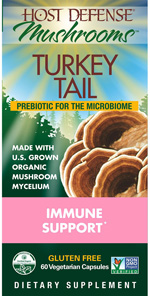 Conscious Lifestyle Recommends:
Conscious Lifestyle Recommends:
Host Defense Organic Turkey Tail Mushroom Capsules
Host Defense’s turkey tail uses activated freeze-dried, certified organic mycelium, with a full spectrum of constituents. It is sustainably harvested and carefully cultured on the Fungi Perfecti farm using the Stamets P Value system for quality assurance. This ensures the provenance and genetics of their turkey tail mushroom supplements for maximum potency and health benefits.
A Note on Side Effects and Dosages
We recommend that the use of medicinal mushrooms be strictly monitored for those on antibiotics, anticoagulants, certain diabetes drugs, and intravenous glucose. Since medicinal mushrooms are potent whole foods and support the body in blood circulation and blood sugar control problems, using them alongside particular drugs intended for the same purposes may cause unexpected results, or an unwanted “doubling up” on treatment. For these conditions, healing mushrooms may still be very beneficial; however, it is important to discuss all usage of medicinal mushrooms with your doctor and to start slowly and incrementally increase your dosage. Also, while these mushrooms are generally regarded as safe by health care professionals, if you are pregnant or regularly taking prescription medication(s), it is essential that you consult your doctor before consuming them, specifically mushroom supplements. Though overdosing should not be an issue with either commercially available products or mushrooms used in a culinary capacity, it is still important to note that none of the information presented here is intended to be a substitute for professional medical advice, diagnosis, or treatment of any kind.
As with any supplement or natural medicine, it is best to start slowly and work your way up to higher dosages to let your body adjust.
This article is excerpted from Healing Mushrooms: A Practical and Culinary Guide to Using Mushrooms for Whole Body Health by Tero Isokauppila.
About The Author
Tero Isokauppila is the president and founder of Four Sigmatic—a natural superfoods company that produces an impressive range of responsibly sourced mushroom powder supplements. He holds a degree in both chemistry and plant-based nutrition from Cornell University and was awarded a Finnish innovation award for discovering that the Japanese matsutake mushroom also grows in Finland. He grew up in Finland on his family’s centuries-old farm, regularly foraging for mushrooms. He currently lives in California, where he is the owner and founder of The Shroom Room in Venice. Learn more at foursigmatic.com
Recommended Product Disclaimer
The products recommended in this article may have different formulations than the products used in the studies and research cited in this article. As such, they may have different effects than have been reported by these studies. No claim is made or implied whatsoever as to the effects of any recommended products or their effects on health. The statements made in this article have not been evaluated by the FDA. Any products recommended are not intended to diagnose, treat, or cure any disease.


